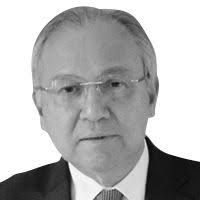‘Memories should never die; we will never let them fade away’

Last Oct. 20, I traveled to Norfolk, Virginia to commemorate the 74th anniversary of General Douglas MacArthur’s landing in Leyte. The event held at the MacArthur Memorial Visitors Center was sponsored by the Virginia Filipino Americans Lions Club headed by its president, Zenaida Donato Laxa.
This important memorial event observed annually is made doubly significant because October is widely celebrated in the United States as the Filipino American History Month.
Joining us at this auspicious occasion were our friends, Virginia 3rd District Congressman Bobby Scott and MacArthur Memorial Center executive director Christopher Kolakowski, and from the Philippine embassy, Police Attaché Col. Sotero Ramos and Deputy Chief of Mission Patrick Chuasoto, with prominent members of the Filipino-American community that included Dr. Johnny Montero of the General Douglas MacArthur Foundation. (See photos in This Week on PeopleAsia at the Allure section of the Philippine STAR today.)
The city of Norfolk is strategically important because this is where the biggest base of the US Navy – Naval Station Norfolk – is located, supporting the forces of the US Atlantic Fleet.
Although MacArthur never lived in Norfolk – having spent a big part of his life stationed from one military post to another during his military career that spanned half a century – he chose it to be the final resting place for him and his wife Jean Faircloth because it is the hometown of his mother, Mary Pinkney Hardy.
In 1960, then-Norfolk mayor Fred Duckworth offered the City Hall Building as the site for a MacArthur museum. The general agreed on condition that he and Jean would be buried in the museum’s rotunda. Unfortunately, MacArthur never saw the memorial, having passed away on April 5, 1964 shortly before the official dedication on May 30 that year.
But if there is one thing Filipinos will always remember about the general dubbed as the “American Caesar,” it was the vow he made to the Filipino people: “I shall return.”
That famous phrase has lingered in the minds of many generations of Filipinos, because the fulfillment of that promise ultimately led to the liberation of the Philippines from Japanese occupation – a dark period in our nation’s history. Filipinos to this day consider the United States as our closest and most trusted ally.
MacArthur – an honorary citizen of the Philippines – has undoubtedly made a lasting mark on the hearts and minds of Filipinos who saw him as an icon of hope, drawing inspiration from his strength, courage and determination. His fulfillment of a “moral obligation” to liberate the country will never be forgotten.
I will never forget as a young teenaged boy in 1961 when I lined up on Taft Avenue to see General MacArthur in an open car with President Carlos P. Garcia during a motorcade to Malacañang, doing his signature MacArthur wave for the two million Filipinos who turned up to welcome the “liberator of the Philippines.”
That last visit of MacArthur to the Philippines came to mind as I viewed the memorabilia displayed at the memorial center and engaged in a conversation with Democratic Congressman Bobby Scott who has a large Filipino community in his district. Congressman Scott – who is of Filipino descent and is the first African-American from Virginia elected to Congress – is co-chair, together with Republican Congressman Steve Chabot of Ohio, of the US-Philippines Friendship Caucus, a bipartisan group dedicated to maintaining and strengthening cooperation between the two countries on political, economic and security issues.
Over the years, the special bond between the Philippines and the US would come to the fore especially during times of tragedy or disaster, such as the devastation wrought by typhoon Haiyan (known as Yolanda in the Philippines) in November 2013.
On Nov. 9 after Haiyan pounded Central Visayas, I received a call from my cousin, Congressman Martin Romualdez, telling me in a choking voice that Leyte has been “completely ravaged.”
Martin asked if I had contacts in the US embassy because the damage was so massive – airlifts would be needed for the worst hit villages, and airdrops were necessary to speedily deliver relief items to hard-to-reach areas. I patched Martin in a conference call with US embassy Military Attaché Air Force Colonel Rick Matton, who responded immediately by advising the US Pacific Command about the devastation.
The US Pacific Command in Honolulu responded to Col. Matton’s “Mayday” call right away. The USS George Washington docked at the Hongkong harbor was immediately dispatched. The aircraft carrier arrived at the Gulf of Leyte on Nov. 12 with cargo jets, choppers and US troops to conduct rescue and relief operations for the victims of typhoon Haiyan.
I was so moved by the US response, I wrote a column titled “Thank God for the United States!” where I likened the arrival of USS George Washington in Leyte Gulf to the return of General MacArthur on the shores of Leyte Gulf in October 1944. The relief and jubilation the Haiyan survivors felt when they witnessed the jets, choppers and troops from the super carrier was reminiscent of the 1944 arrival of American forces to liberate the Philippines. Unexpectedly, I was flooded with emails and text messages expressing their gratitude to the United States.
In 1951, General MacArthur addressed the US Congress announcing his retirement when he said: “Old soldiers never die; they just fade away.”
Remembering those words from the General – knowing the US has always stood by the Filipino people during good times and bad times – let me paraphrase MacArthur’s words and say: “Old memories should never die; we will never let them fade away.”
- Latest
- Trending

























